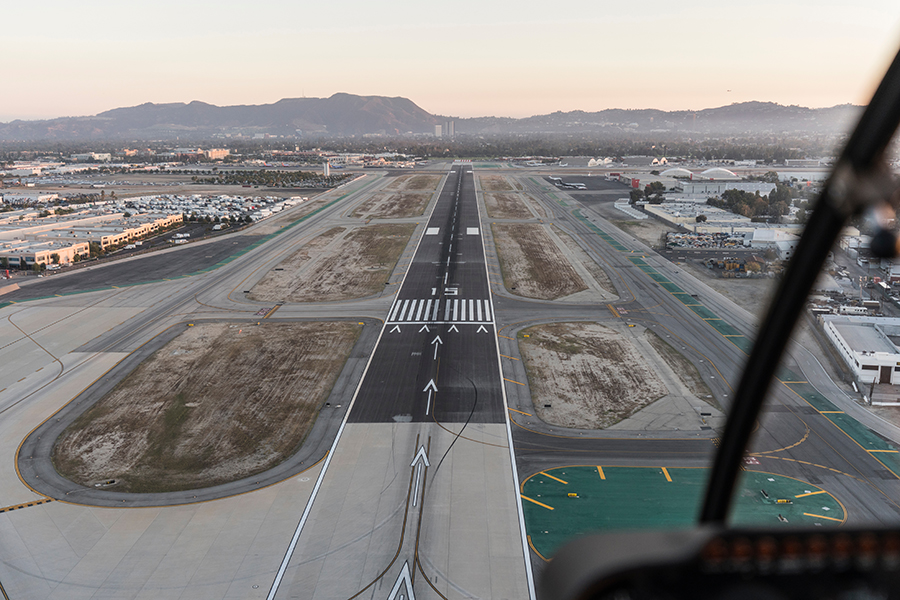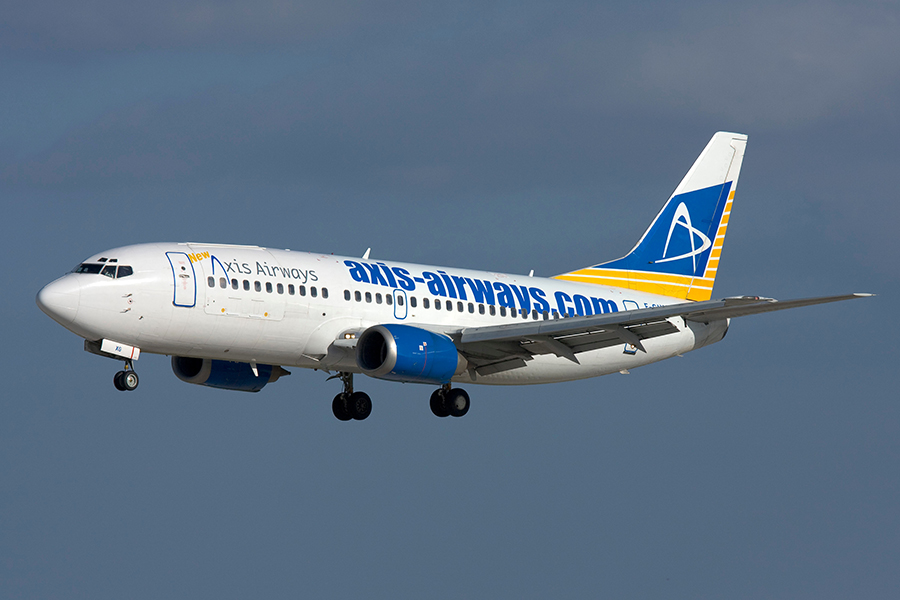-
Types of Airport Signs
-
1. Mandatory Instruction Signs
- Runway Holding Position Signs
- Runway Approach Area Holding Position Signs
- ILS Critical Area Holding Position Sign
- No Entry Sign
-
2. Location Signs
- Taxiway Location Signs
- Runway Location Sign
- Runway Boundary Sign
- ILS Critical Area Boundary Sign
-
3. Direction Signs
-
4. Destination Signs
-
5. Information Signs
-
6. Runway Distance Remaining Signs
-
Conclusion
Quickly reading and understanding airport signs is critical to becoming a safe pilot.
Missing a freeway exit sign on the road isn’t a big deal. At an airport, overlooking a sign could delay traffic at best and be dangerous at worst.
Luckily, we’re here to help.
In this article, you’ll learn what airport signs mean, how to read them, and where you’ll find them.
After reading this guide, complete your knowledge with our Essential Guide to Airport Markings.
Types of Airport Signs
There are six types of signs used at airports:
- Mandatory Instruction Signs
- Location Signs
- Direction Signs
- Destination Signs
- Information Signs
- Runway Distance Remaining Sings
Let’s take a look at each in detail.
1. Mandatory Instruction Signs
Mandatory instruction signs mark critical areas (such as runways) where aircraft are not allowed to enter without clearance. They also mark areas where aircraft are not allowed to enter at all.
Mandatory instruction signs have the following characteristics:
- Color: They feature white text on a red background.
- Shape: These signs are usually rectangular or square, with the text and symbols properly centered.
- Location: You can find them at taxiway and runway intersections, holding positions, and other critical points on the airport surface.
There are four types of mandatory instruction signs:
- Runway Holding Position Signs
- Runway Approach Area Holding Position Signs
- ILS Critical Area Holding Position Signs
- No Entry Signs
Runway Holding Position Signs

A runway holding position sign indicates where to stop and hold before entering or crossing a runway.
You’ll find runway-holding position signs where taxiways intersect with runways.
Accompanying them are painted markings on the taxiway surface, consisting of two solid yellow lines followed by two dashed yellow lines.

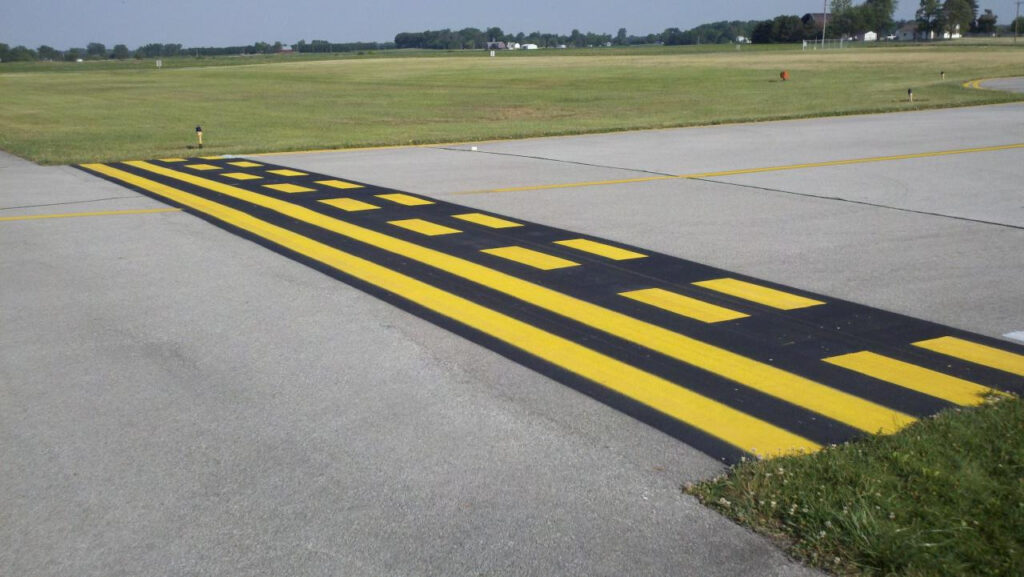
Runway holding position signs display the runway designation, such as “27” or “9,” indicating the runway you’re about to enter or cross. The inscription might include a letter (e.g., “L” or “R”) to identify parallel runways (e.g., “27L” or “27R”).
Runway Approach Area Holding Position Signs

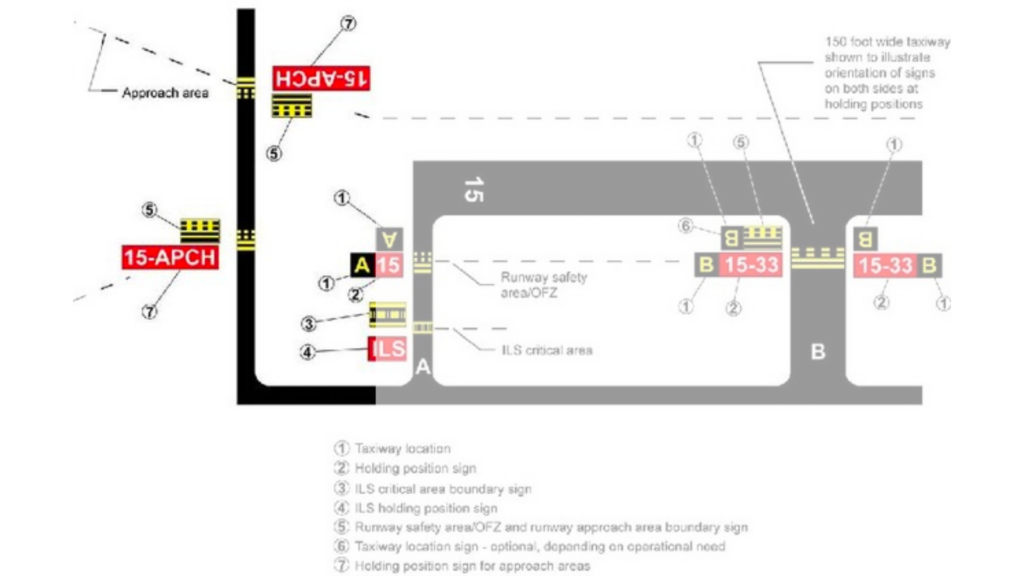
A runway approach area holding position sign indicates where pilots must stop and hold before entering an area that could interfere with aircraft on the final approach.
You’ll find the runway approach area holding position signs on taxiways near approach areas where aircraft are descending for landing. These signs indicate that you are approaching a point where your aircraft may interfere with the safety of the aircraft on the final approach, even if you are not directly entering or crossing the runway.
The sign displays the runway designation with a dash, followed by “APCH” (e.g., “27 – APCH” or “9 – APCH”). This inscription informs you that you are approaching the critical area for the specified runway’s approach path.
ILS Critical Area Holding Position Sign

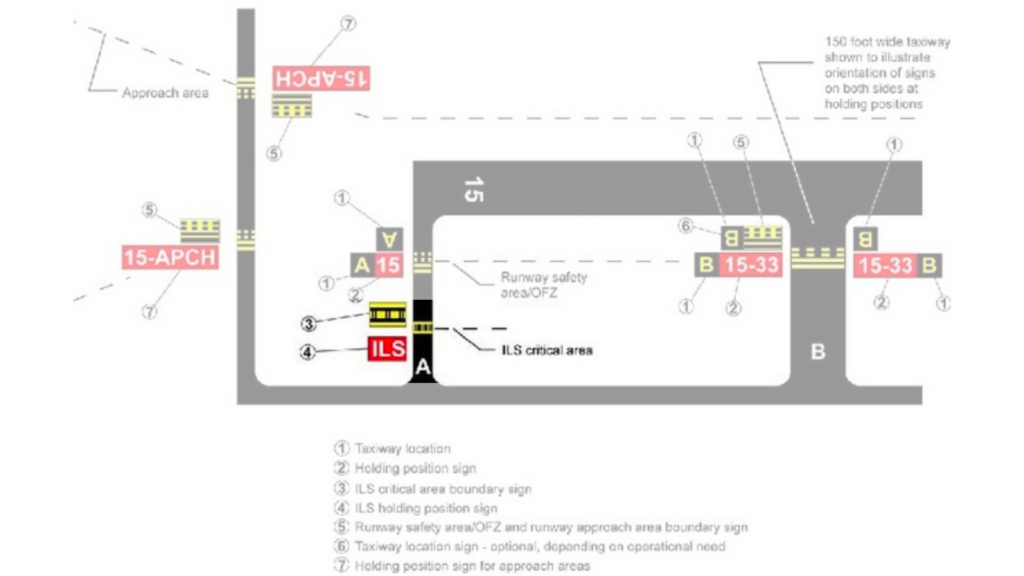
An ILS (Instrument Landing System) critical area holding position sign denotes the ILS critical area. The ILS critical area helps maintain the accuracy and reliability of ILS signals during instrument approaches in low visibility conditions by limiting how close aircraft on the ground get to the ILS equipment (and signals).
You’ll find ILS critical area holding position signs on taxiways near the critical areas of ILS, typically close to the runway threshold or glide slope transmitter.
The sign displays the letters “ILS” indicating you’re approaching the ILS critical area. Sometimes, it may also include the runway designation. You might hear these ILS holding position markings referred to as “CAT I” or “CAT II” (for example, “Runway 15 CAT I holding point”). The normal holding point closer to the runway is called the “visual holding point.”
Remember that entering the ILS critical area without proper clearance may cause signal interference, potentially affecting the safety of aircraft conducting instrument approaches. By staying aware of ILS critical area holding position signs and their purpose, you’ll contribute to the safe and efficient operation of the airport.
No Entry Sign
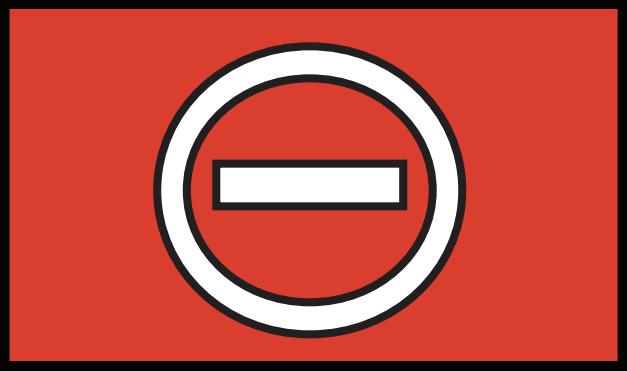
You’ll find no entry signs at the entrance of restricted areas, such as one-way taxiways, closed taxiways, or other areas where aircraft are not allowed to enter.
Ignoring a no-entry sign can lead to unsafe situations or violations of airport regulations, which may result in penalties or suspension of your pilot’s license. Do not enter areas beyond a no-entry sign unless you have specific permission.
2. Location Signs
Airport location signs are essential for helping pilots navigate the complex network of taxiways, ramps, and other areas while on the ground. These signs also provide valuable information about airport boundaries.
Location signs have the following characteristics:
- Colors: Location signs have yellow inscriptions on a black background.
- Location: You’ll find location signs along taxiways, ramps, and aprons. They are often placed next to directions or mandatory instruction signs to help pilots identify their position on the airport surface.
- Content: The sign displays an alphanumeric code, such as “A,” “B,” or “1,” which corresponds to the designation of the taxiway or area you’re on. Sometimes, a location sign may include two or more designations, such as “A-B,” indicating that you are at the intersection of Taxiways A and B.
There are four types of location signs:
- Taxiway Location Signs
- Runway Location Signs
- Runway Boundary Signs
- ILS Critical Area Boundary Signs
Taxiway Location Signs

Taxiway location signs are used to identify the current taxiway that the aircraft is on.
You’ll find taxiway location signs along taxiways, often near intersections or at points where taxiways meet ramps or aprons. You’ll sometimes find them next to directions or mandatory instruction signs to provide context for your current location.
The sign displays a letter or a combination of letters and numbers (e.g., “A” or “B1”), which correspond to the designation of the taxiway you’re on. Sometimes, a location sign may include two or more designations (e.g., “A-B”) to indicate that you are at the intersection of two taxiways.
Runway Location Sign
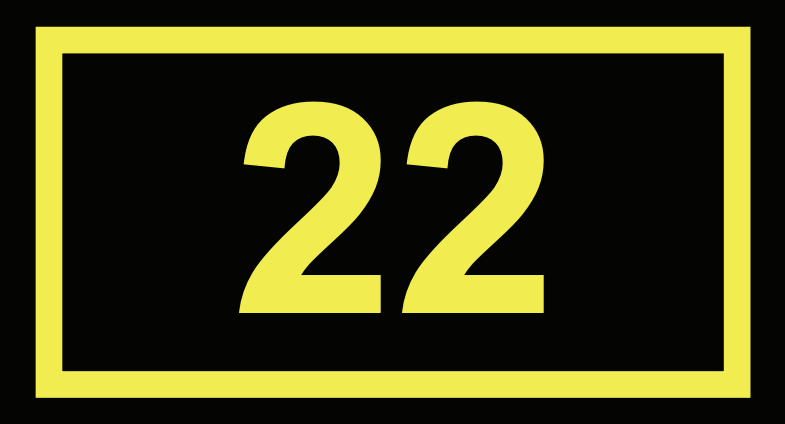
You’ll find runway location signs near runway holding positions or intersections where taxiways meet runways. They are often placed with mandatory instruction signs, such as Runway Holding Position Signs, to provide context for your current location.
A runway location sign displays the runway designation (e.g., “09/27” or “18L/36R”), which corresponds to the runway you are currently near or adjacent to. The runway numbers represent the magnetic heading of the runway rounded to the nearest 10 degrees, while the letters “L” and “R” indicate left or right for parallel runways.
Runway Boundary Sign

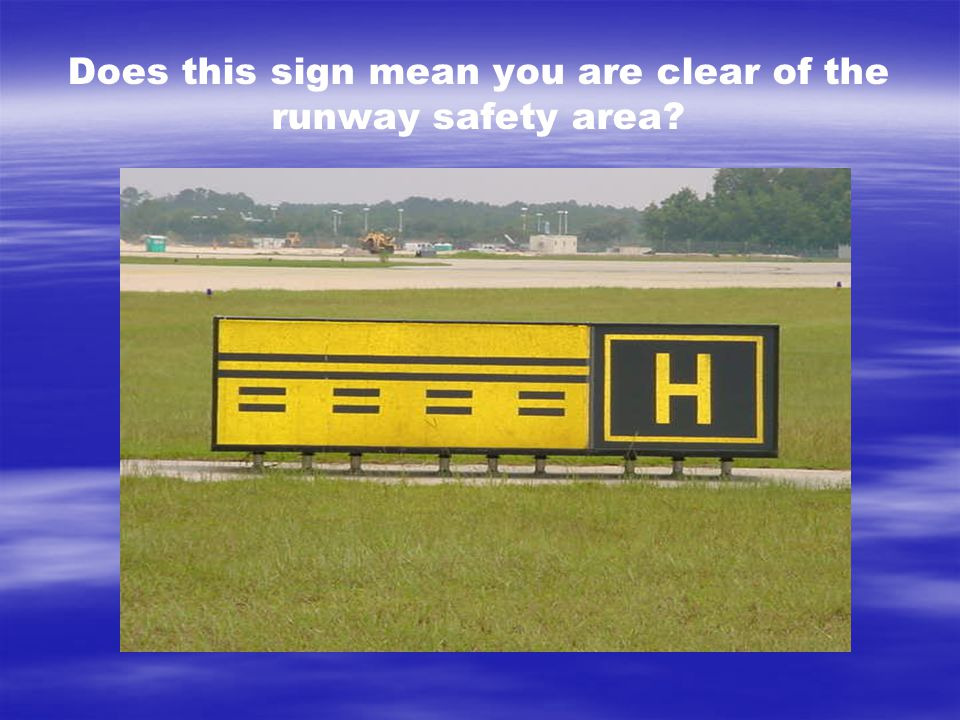
Runway boundary signs are less common compared to other airport signs. They look the same as the runway holding point markings on the taxiway:
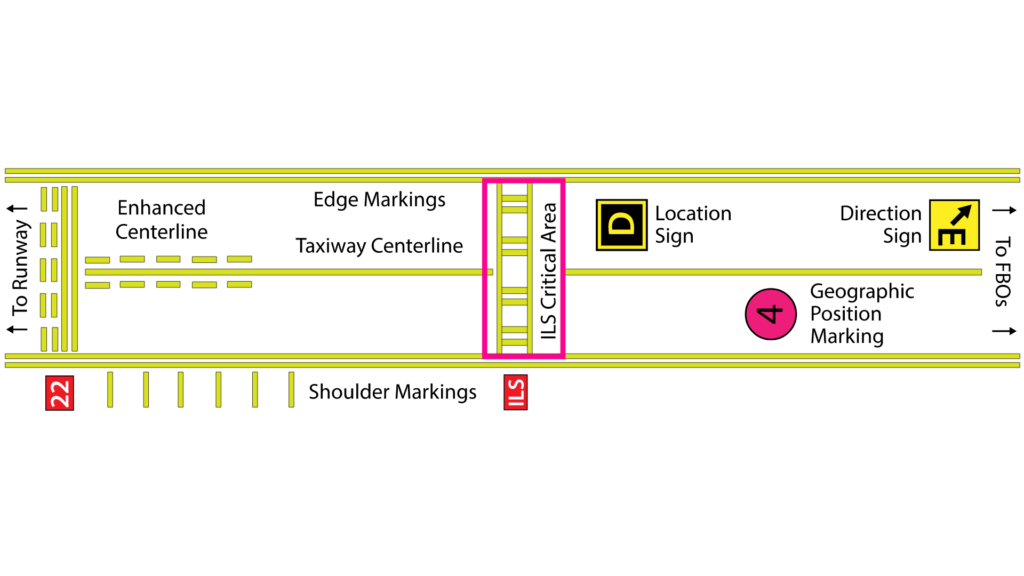
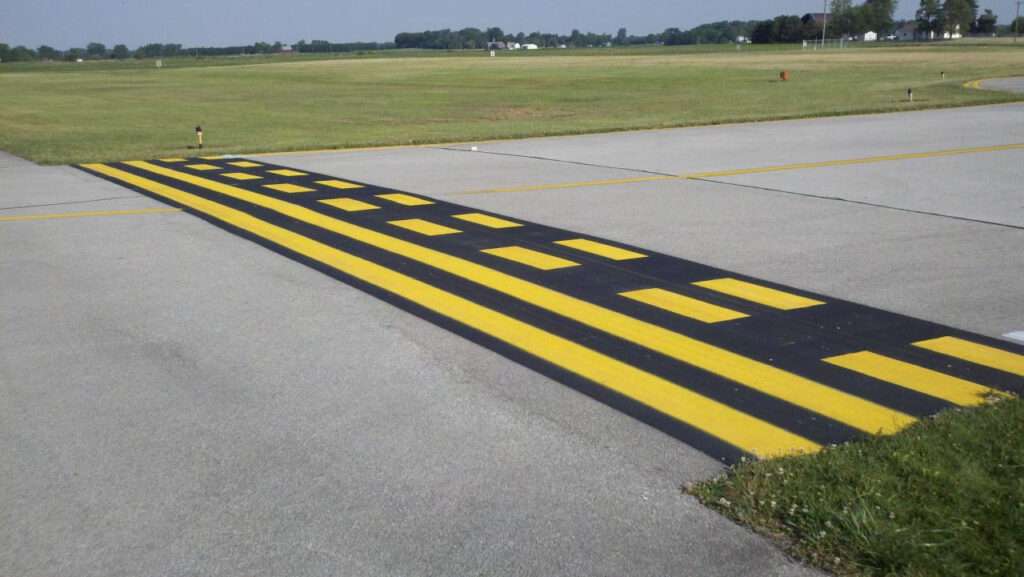
Runway holding position signs denote the intersection between the taxiway and the runway where aircraft must stop if they do not have clearance to enter the runway. It is effectively where the runway begins, and the taxiway ends.
ILS Critical Area Boundary Sign

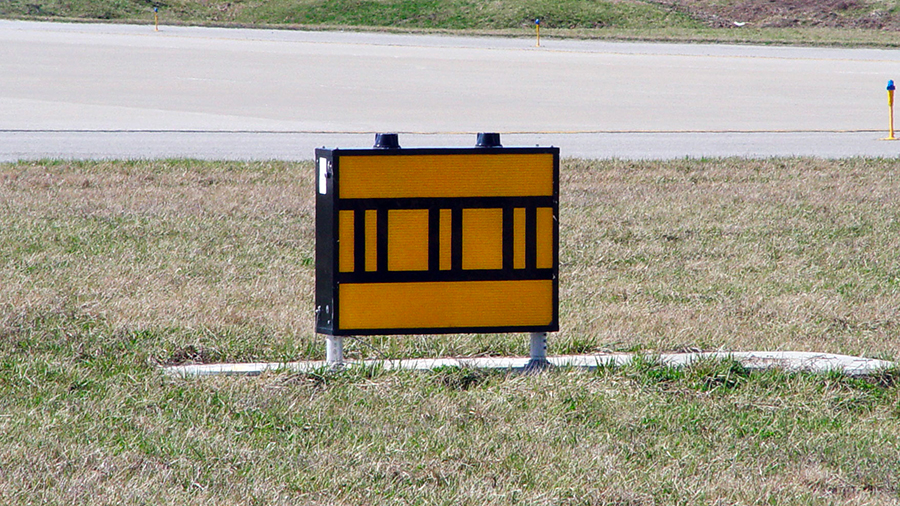
The ILS critical area boundary signs denote the holding position for ILS critical areas.
Similar to the runway boundary sign, the ILS critical area boundary sign looks the same as its marked counterpart. It is also not commonly used.
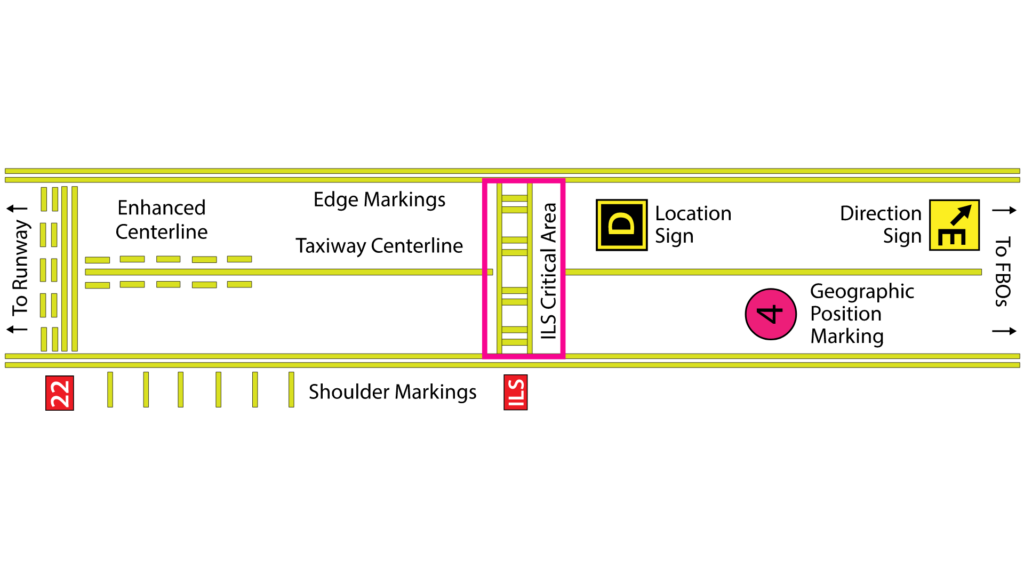
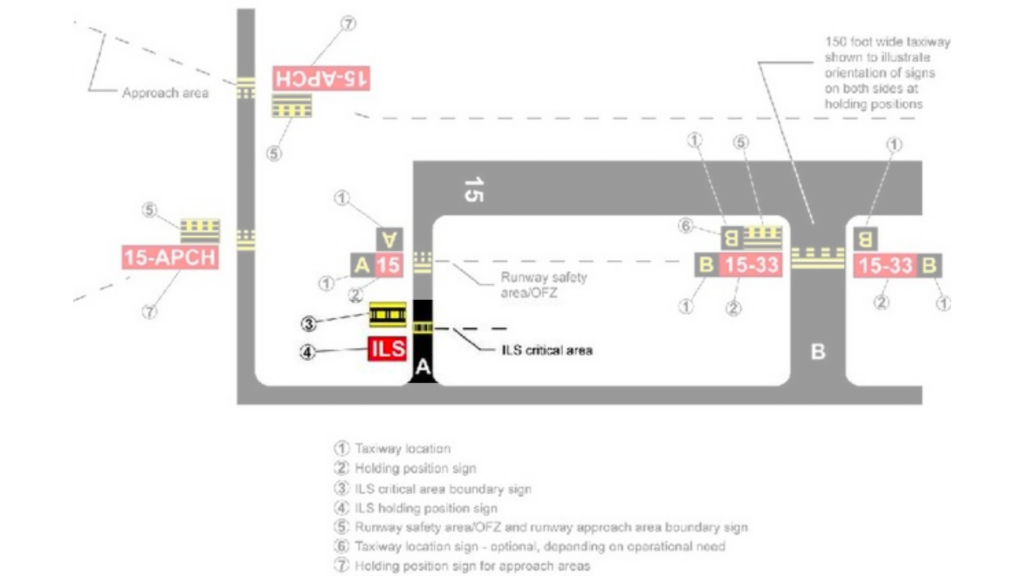
ILS critical area markings on the taxiway
3. Direction Signs

Direction signs have the following characteristics:
- Colors: Direction signs have black inscriptions on a yellow background.
- Location: You’ll find direction signs along taxiways, ramps, and aprons, typically at intersections or junctions where pilots may need guidance to follow the correct path.
- Content: The sign displays an arrow pointing in the direction of the turn, followed by an alphanumeric code, such as “A,” “B,” or “1.” This code corresponds to the designation of the taxiway, runway, or area, in the direction of the arrow. Multiple arrows and designations may sometimes be displayed on the same sign.
4. Destination Signs
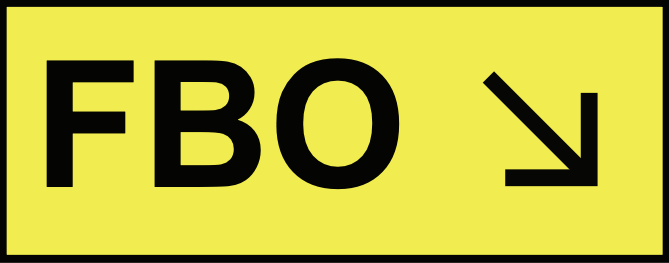
Destination signs are similar to direction signs and share the same colors and shapes.
There is one critical difference, though.
Destination signs mark the direction that an aircraft needs to go to arrive at the destination depicted on the sign (such as the FBO in the example). Directional signs mark the direction of a particular runway or taxiway at an intersection.
5. Information Signs
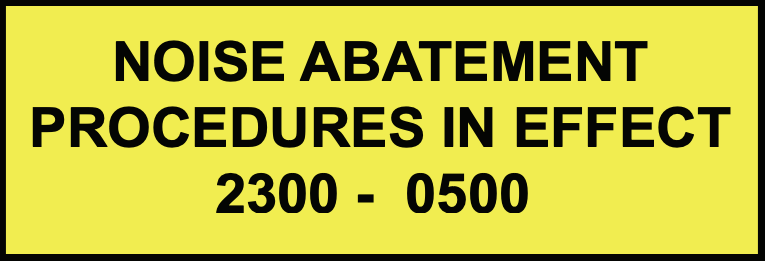
Information signs feature black inscriptions on a yellow background. These inscriptions are usually pieces of text containing important information.
These signs are found anywhere at the airport where necessary.
6. Runway Distance Remaining Signs

Runway distance remaining signs are essential for providing pilots with information about the remaining usable distance of a runway for takeoff or landing. These signs help pilots assess if they have enough runway available to complete their takeoff or landing safely.
Here’s an overview of runway distance remaining signs:
- Colors: Runway distance remaining signs have white inscriptions on a black background.
- Content: The sign displays a number, usually representing the remaining distance in thousands of feet (e.g., “5” for 5,000 feet).
- Location: You’ll find these signs alongside runways, typically installed at regular intervals, such as every 1,000 feet.
Conclusion
Airport signs play a critical role in maintaining the safety and efficiency of airport operations. As a pilot, understanding and quickly interpreting these signs is essential.
Remember, always stay vigilant, and use all available resources – including airport diagrams and ATC instructions.
Don’t forget to check out our Essential Guide to Airport Markings to further enhance your knowledge and skills in navigating the airport.
Safe flying!
